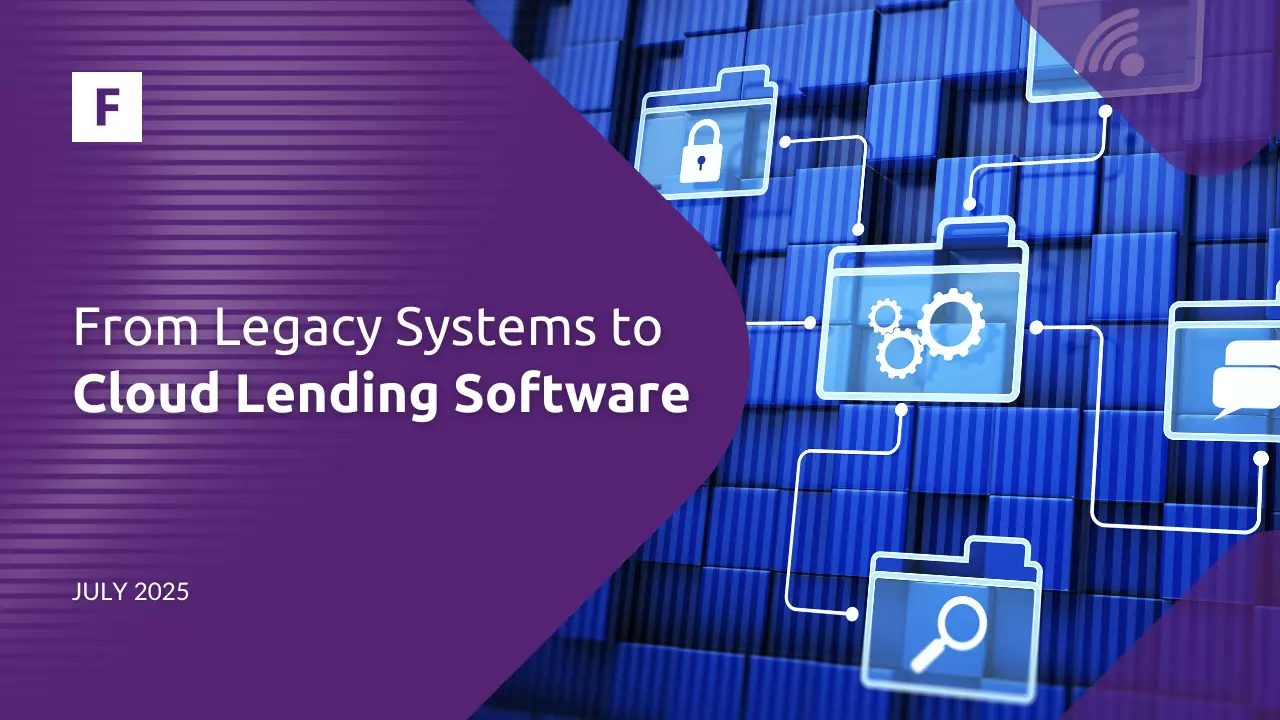Staying ahead of the curve is essential for businesses in the lending world. This article delves deep into the current state of the lending market, offering insights into emerging trends, strategic approaches, and promising growth avenues for upcoming lending companies.
These are the main key takeaways from this article:
Understanding the current market.
Overview of lending sources.
The role of technology.
Importance of strategic marketing and branding.
Financial institutions offer various types of loans to cater to different borrowing needs. The most popular are personal loans, auto loans, student loans, mortgage loans, home equity loans, credit-builder loans, debt consolidation loans, and payday loans. Understanding each loan type's terms, conditions, and eligibility criteria is essential for financial businesses to make informed borrowing decisions.
Growth Projections
The lending and payments global market has recently experienced significant growth, from $11,495.08 billion in 2023 to $12,410.68 billion in 2024, reflecting a compound annual growth rate (CAGR) of 8.0%. The global consumer lending market is expected to grow remarkably between 2024 and 2028 if the current steady rates continue. The expected market size will be $16,828.1 billion in 2028 at a CAGR of 7.9%. The main reasons for growth include technological advancements and improved consumer behavior analysis. The regions shaping the market are North America, Europe, and Asia-Pacific. North America, particularly the United States, will remain the most influential player in the lending market, where any changes could steer overall trends.
Although not everything is positive. U.S. banks are reporting that conditions for businesses and consumers are getting tougher. Economists anticipating a recession believe the banking system, affected by 11 interest rate hikes and the failure of three midsize banks in 2023, could be the source.
Businesses are exploring alternative lending sources, given that acquiring capital to initiate a financial business has become more complex. Securing small business loans has become more challenging and expensive. For example, SBA loans now average an interest rate of 7.180% for a 20-year loan, compared to 2.765% in October 2021. Rates vary based on credit scores, business financial strength, and loan structure. The SBA has tried to streamline its loan application process by expanding acceptable lenders and relaxing regulations, potentially providing more access to low-cost credit.
Hard times require a different approach. Taking loans with economic hardship on the horizon might be a bad idea, but there are some situations where taking loans is a smart option. A business loan can offer a financial cushion if facing an economic downturn with limited cash. For lending businesses that need money, exploring alternative financing options such as peer-to-peer lending or microloans can also provide the necessary capital without the burdens of traditional bank loans. According to The Globe and Mail reports, alternative financial sources such as the non-bank lending market are expected to double their assets from today's $1.6 trillion to $3 trillion by 2028, opening up opportunities for businesses to access capital from non-traditional sources.
Where To Start?
Before starting a loan business, it's crucial to thoroughly understand the industry and determine which is the right path for you. There are several ways to proceed with operating, as initial capital is required. The first option is to lend your own capital, choosing between secured or unsecured loans. This requires significant initial capital but allows you to keep all interest and fees. The second option is to let Investors fund the loans, receiving interest payments, while you earn a fee at loan origination. A third way is to consider Peer-to-peer (P2P) lending. Facilitate connections between borrowers and lenders via an app or website, earning a commission without using your own funds. Although there are many possible ways to manage your business, it is important to realize that regulations and the need for capital can make this a challenging business, even if you have the potential to make a good profit.
Unless you use your funds, you must develop a business plan to attract investors. Start with an executive summary, providing a quick overview of your business and profit expectations. Describe your business, goals, and key personnel in the business summary. Clearly outline the types of loans you'll offer in the products section. Conduct a market analysis to examine your target market, potential demand, and challenges. Include a competitive analysis to compare your strengths with competitors. Detail your marketing plan, specifying how you'll reach and convert customers. Discuss logistics in the operations plan, including location and setup. Provide a financial plan with projections for startup costs, required investments, and cash flow for three to five years. Finally, any supplementary materials should be included in the appendix.
Lenders must follow state and federal regulations to avoid fines and legal issues. This ensures fair treatment of borrowers and protects the lender's reputation. Proper compliance also helps maintain trust and transparency in financial transactions. To ensure regulatory compliance, invest in loan origination software, hire a compliance officer, and stay informed about lending laws and regulations changes. Additionally, staying informed about the market situation and obtaining the necessary licenses is essential for operating legally and competitively.
Mastering Online Lending
Once you've organized your plans on paper, it's time to begin constructing your online lending system. Your initial priority should be selecting the right software for your needs. The key things you should prioritize are scalability, security, and user-friendliness. Scalability poses a significant challenge for many small businesses, hindering growth potential and sustainability. Fintech Market's consumer lending system supports 8 different lending products that can be customized according to certain business needs.
A key aspect of running a successful online lending system is having a credit evaluation system to accurately assess the creditworthiness of potential borrowers and make informed lending decisions. Essential elements of this system include reviewing credit history for insights into financial behavior, verifying income and employment to ensure repayment ability, calculating debt-to-income ratio to gauge financial health, and evaluating collateral to mitigate default risk. Implementing a credit evaluation process helps minimize non-performing loans and maximize profitability.
As technology continually evolves, a few main trends will shape the future of credit evaluation in financial institutions. Technological advancements, such as artificial intelligence, machine learning, and big data analytics, are revolutionizing how financial institutions assess creditworthiness. These technologies enable faster data processing, more accurate risk assessments, and improved decision-making capabilities.
Fintech Market offers a credit decision engine that simplifies your work and gives you more time to focus on customers. The decision engine facilitates decision-making model creation by integrating input information and equations with customizable data fields and smooth system integration. With the decision engine, you can create customizable risk models to be suitable for your business, featuring visual flowchart management and flexible automation.
Security is vital in a loan management system, and there are two key measures to ensure it. The first one is strong user authentication. Foolproof passwords and Multi-Factor Authentication (MFA) add an extra layer of security, allowing only authorized individuals access to the system. Role-Based Access Control (RBAC) grants permissions based on users' roles within the organization. RBAC enables administrators to define roles and permissions, effectively controlling information access so individuals can only access relevant data based on their job responsibilities.
The loan management system should be easy for your employees to use. When choosing software, request a demo to thoroughly evaluate its features and ensure it meets your specific needs. This helps you verify its capabilities and decide if it is the right fit for your organization before making a commitment.
Other features to consider are Customer Relationship Management (CRM) and payment processing. CRM is instrumental in organizing and managing customer data, including maintaining an overview of customer profiles, transactions, and interactions with the company. A crucial aspect of payment processing involves handling verified payments, including transferring funds or processing debit, ACH, or e-check payments.
How To Stand Out?
To differentiate yourself from other lenders, it's essential to brand your company strategically. Consider your brand as a signal that communicates with customers. Whether it's your logo, advertisement, or name, it triggers information stored in customers' minds. While many lending institutions offer similar rates and products, differentiation is crucial. By branding around unique values such as exceptional customer service or reliability, lenders can establish a distinct edge that is difficult for competitors to replicate.
Three key marketing strategies to bear in mind are quite simple yet effective. Identify what makes your lending institution unique and valuable to customers, ensuring clarity, specificity, and relevance to your target audience. Develop a consistent tone, voice, and messaging strategy that aligns across all communication channels. Consistently meet and exceed customer expectations, monitor feedback channels, and prioritize customer satisfaction. Following these tips can foster long-term relationships with customers. Another effective strategy for building connections is implementing loyalty programs. To stay competitive, financial institutions must prioritize innovative loyalty programs that recognize and reward customers, as studies show the significant influence of rewards on customer decisions and spending behaviors. Loyalty programs have become essential for banks to demonstrate their commitment to customer satisfaction amidst increasing competition from fintech firms.
To ensure your company's and branding's success, assembling a strong team is essential. Hire individuals who grasp your business objectives and possess industry knowledge. Cultivating a network of agents and brokers can expand your client base and service offerings. Additionally, forging partnerships with other financial institutions can offer valuable resources and opportunities for growth.
Operate Efficiently
You can use different metrics to track and measure your success. One way is to use Key Performance Indicators (KPIs). Tracking lending KPIs is essential for understanding a business's financial and operational health, providing quick insights through visual representations. These metrics help managers analyze trends over time. With KPIs, it is possible to have an overview of loan approval rate, loan default rate, loan portfolio yield, cost of funds, operational efficiency ratio, loan-to-deposit ratio, and net interest margin (NIM).
Growth strategies
After setting off well, it is natural to seek possibilities for expansion. To expand your business into new markets, start by researching your industry and potential growth opportunities, considering factors like geography, demographics, and product diversification. Identify the most viable markets for expansion based on your findings. Develop a comprehensive plan outlining your goals and strategies for achieving them. Secure appropriate funding to support your expansion efforts, exploring non-traditional lending sources if necessary. Finally, marketing strategies should be implemented, and internal adjustments should be made to support expansion.
In conclusion, the lending market presents several opportunities for starting lending businesses. By understanding the evolving landscape and embracing innovative strategies, upcoming providers can capitalize on emerging trends and unlock new avenues for growth.
About Fintech Market
FTM's cloud-based loan origination software & loan management system offers CRM, KYC, & financial risk management tools for loans, deposits, & investments. This empowers neobanks, SMEs, & more to optimize lending processes.







